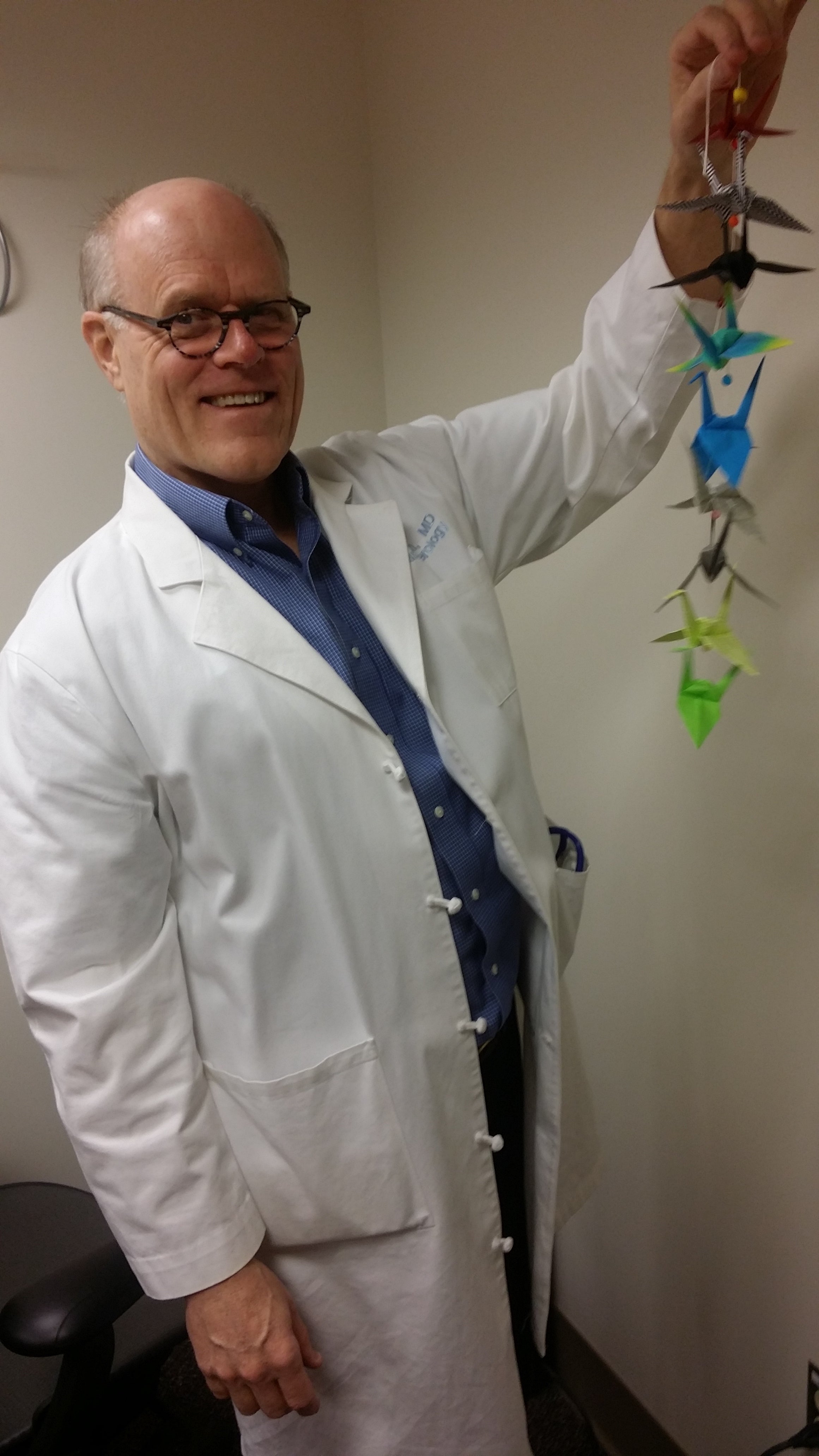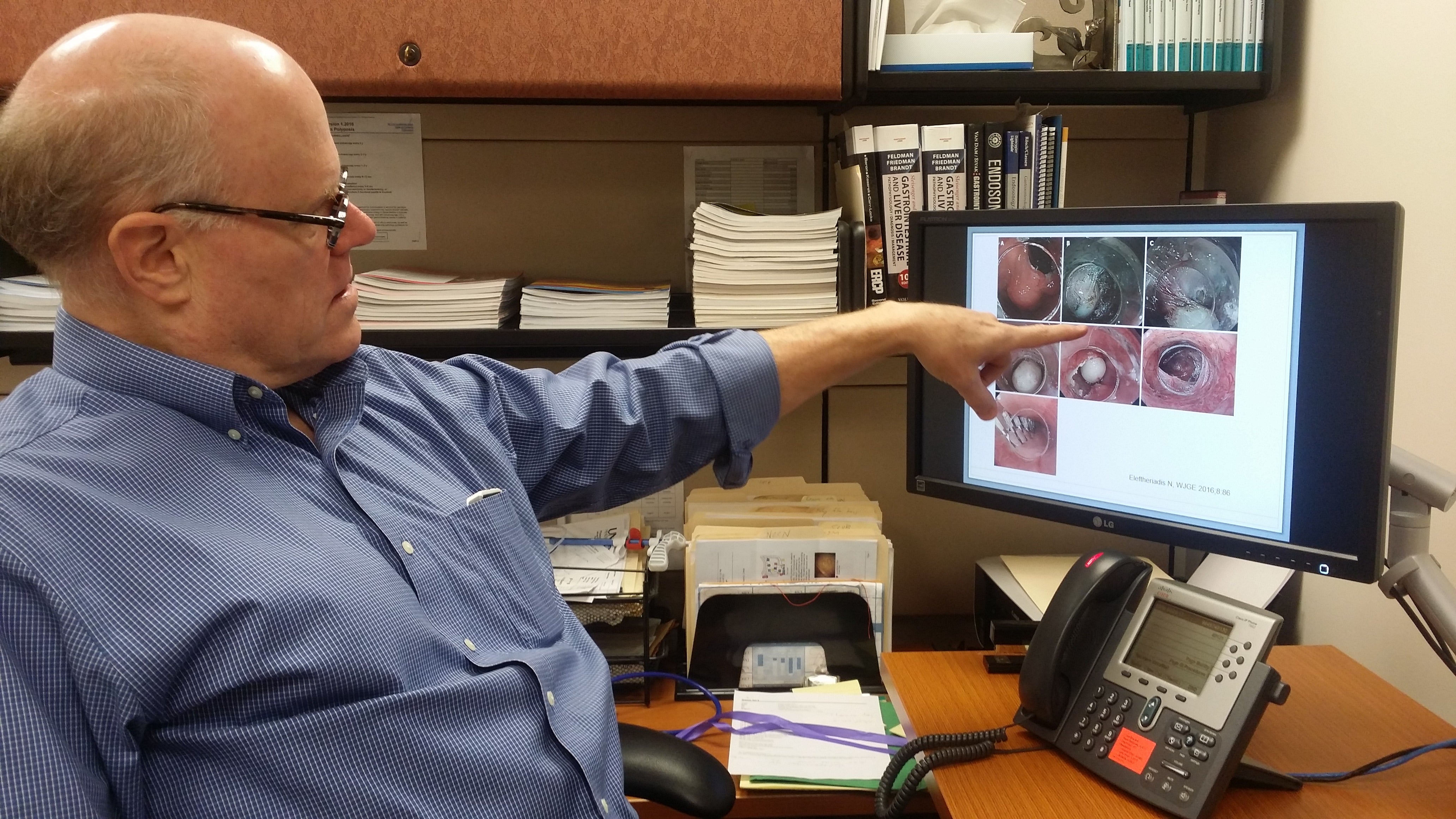After a sabbatical in Japan, Ian Grimm, MD, has introduced new forms of Natural Orifice Transluminal Endoscopic Surgery (NOTES) to UNC Medical Center.


by Kim Morris, UNC Department of Medicine
Ian Grimm, MD, Director of GI Procedures in the Department of Medicine’s Division of Gastroenterology and Hepatology, takes pride in crafting novel solutions with his hands. Performing complicated procedures through the end of an endoscope requires eye-hand coordination, real time problem solving and focus. His patients often benefit by avoiding surgery.
After training in Japan, Dr. Grimm returned to UNC Medical Center with highly specialized knowledge and skills in endoscopic submucosal dissection (ESD) and POEM, both forms of Natural Orifice Transluminal Endoscopic Surgery (NOTES). ESD is an advanced technique designed to remove growths in the digestive tract, including early cancers of the esophagus, stomach or colon.
Many advances in endoscopic technology have come from Japan, beginning in the 1950s. ESD was developed in the 1990s as a treatment for early gastric cancer, a common disease in East Asia, and has since spread to other countries. Thanks to improved screening and the development of procedures like ESD, over 90% of patients with early gastric cancer can survive their cancer. Only recently has ESD been performed in the West.
Dr. Grimm was able to study with many leading ESD masters and pioneers in Japan, including Dr. Haruhiro Inoue, a thoracic surgeon in Tokyo. In 2008, Inoue used ESD techniques to develop an elegant new procedure for the treatment of achalasia. He named the procedure “POEM” (per-oral endoscopic myotomy).
“Patients with achalasia suffer from a failure of the lower esophagus to relax during swallowing, making it difficult for food and liquids to reach the stomach,” said Dr. Grimm. “Patients present with symptoms of regurgitation, weight loss and a general feeling that food won’t go down. The goal of treatment is to relieve the blockage in the lower esophagus.”
Historically, achalasia was often treated with a surgery known as the Heller myotomy, designed to cut the muscles at the bottom of the esophagus. This operation, developed in 1914, later became a laparoscopic or minimally invasive surgical version during the 1990’s. POEM represents the latest stage in an ongoing progression of surgery toward less invasive procedures; it combines the effectiveness of a time-tested operation with the simplicity of routine upper endoscopy. According to Inoue, POEM is a Heller myotomy, only without the external scars. Since its invention, POEM has steadily gained momentum around the world.
POEM Preserves the Integrity of the Esophagus
On average, the POEM procedure takes about 90 minutes. Most patients can take clear liquids by mouth the day after the POEM procedure and are able to eat soft foods on the second day, which they continue for two weeks before resuming a more typical diet.
To perform POEM, Dr. Grimm inserts a flexible camera-equipped endoscope through a patient’s mouth into the esophagus. Then, he makes a small opening in the lining of the esophagus and uses the scope to tunnel inside the wall of the esophagus, into the stomach. He then cuts the muscle layer of the lower esophagus and upper stomach where the passage of food is obstructed. Finally, he closes the opening in the wall of the esophagus and removes the endoscope. The procedure is minimally invasive, keeping the inner lining of the esophagus intact, which serves as a protective flap.
Only a handful of centers in the Southeast offer this less invasive approach to treating swallowing disorders. Dr. Grimm has been performing the procedure regularly since August, 2016.
Advanced Endoscopic Techniques Reduce the Need for Surgery
Dr. Grimm says the POEM procedure is helping to pave the way for several new endoscopic procedures that will reduce the need for surgery. He routinely encounters significant opportunities to help patients with polyps and other growths in the digestive tract avoid an operation.
“One-third of Americans who undergo removal of part of the colon for an abnormal growth do not have colon cancer,” said Dr. Grimm. “Instead, they have a noncancerous polyp that can often be treated endoscopically. Surgery is usually unnecessary when the condition is a benign polyp. Advanced endoscopic mucosal resection techniques and ESD offer a promising, much less invasive alternative.”